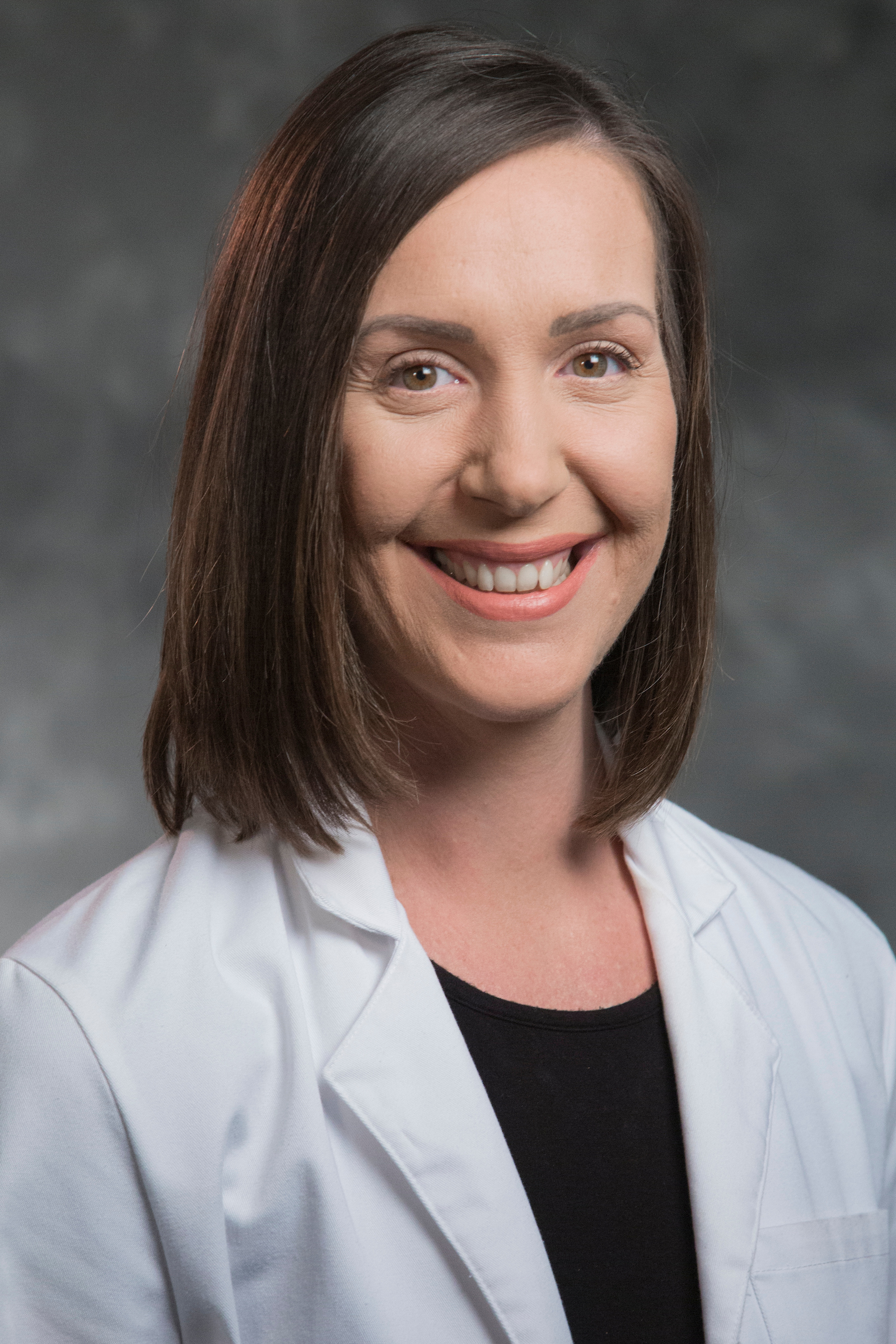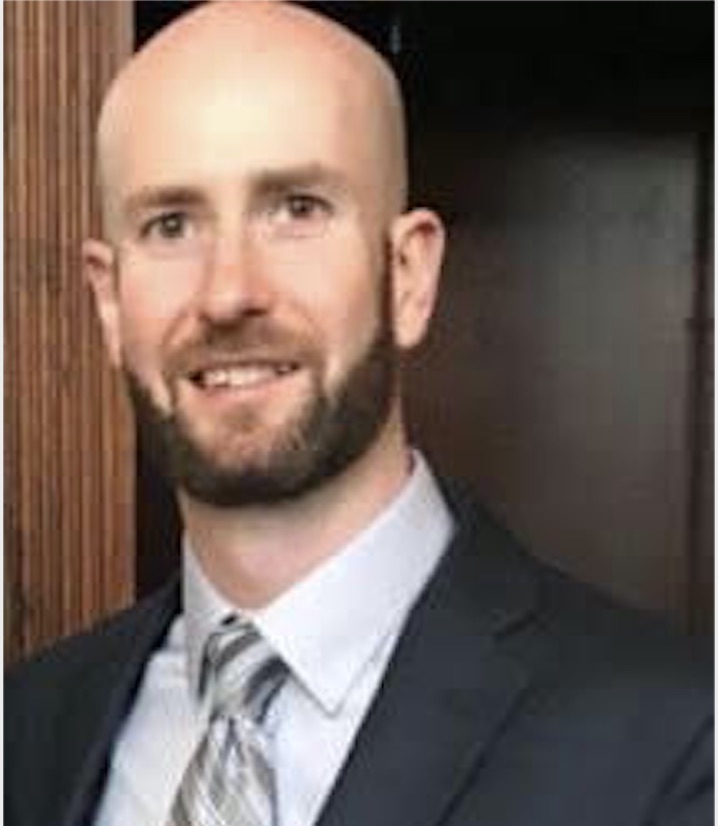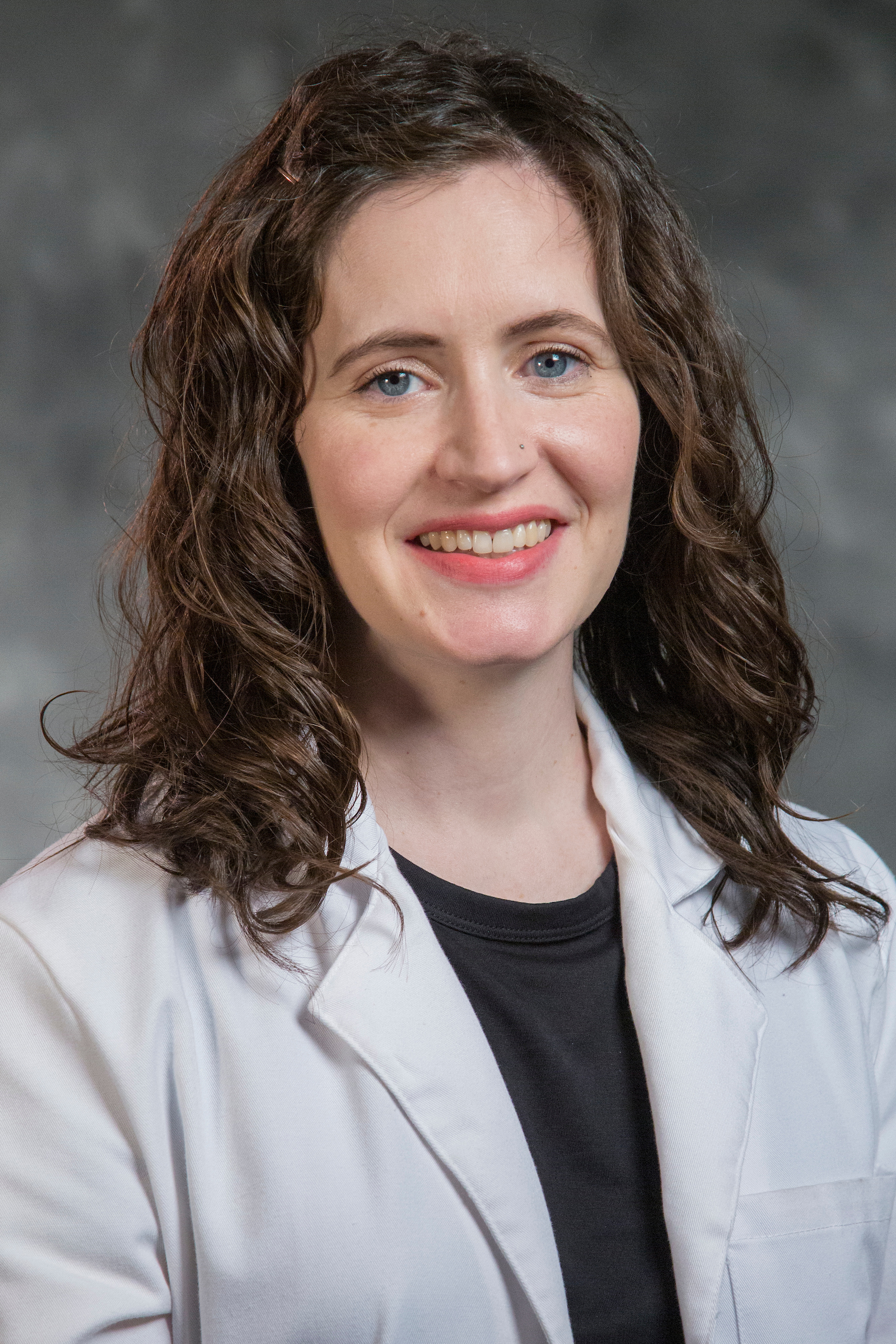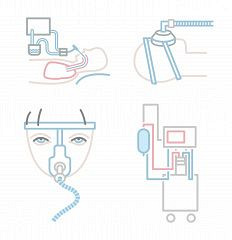Mechanical Ventilation: Understanding Settings, In-Line Speaking Valves, And Swallowing #e293
Presenters: multiple experts
Gain a deeper understanding of ventilator compensation and how to contribute appropriately during in-line speaking valve trials.
"Extremely detailed and applicable to the acute care SLP servicing critical care units and patients. I appreciated the collaborative conversation between SLPs and RT. Content, images, review of equipment, settings, modes, videos, demonstrations were beyond helpful."
– S.W., prior course participant
Read more comments about this course!
This course is for clinicians interested in mechanical ventilation, the application of in-line speaking valves, and swallowing interventions for tracheostomized and mechanically ventilated adult patients. Those newer to this population will appreciate video demonstrations and visual examples of ventilators within a critical care unit. The presenters also discuss more advanced pulmonary topics including interpreting what ventilator settings tell us of the patient's underlying respiratory pathophysiology.
Steps for in-line speaking valve application with troubleshooting and ventilator compensation will be reviewed in detail. Collaborative conversations between SLPs and a Respiratory Therapy Adult Critical Care Specialist will help foster a deeper understanding of ventilator compensation and how to contribute appropriately during in-line speaking valve trials. Additionally, an overview of swallowing in the tracheostomized, mechanically ventilated populations will be covered. Course focus is the adult population.
Course is offered for 0.25 ASHA CEUs – 2.5 Contact Hours.
Course Overview – Run Time: 2:37:59
- Basics of ventilation and oxygenation.
- Basic anatomy of the lungs.
- Respiratory failure and indications for tracheostomy and mechanical ventilation.
- External features of a ventilator.
- Ventilator terminology.
- Modes of mechanical ventilation.
- Reading and interpreting ventilator settings.
- Application and troubleshooting of In-Line PMV.
- Swallowing while on mechanical ventilation.
"This was a great course! It provided much needed information for SLPs working with patients who require mechanical ventilation. I highly recommend this course for all therapists who work with this population."
– A.S., prior course participant
Read more comments about this course!
The content of this online CE course does not focus exclusively on any specific proprietary product or service. Presenter financial and non-financial disclosures may be found in the Presenter & Disclosures area.
Video PowerPoint presentation with author narration & downloadable handout. Stop and re-start the course at any point. Learners retain access to course content after completion for ongoing reference and review.
Reviews
"All the information was very helpful. Lots of useful examples and cheat sheets to print off. Having several different speakers was good. Recap of basics at the beginning was helpful." P.H. (Jul. 2024)
"Beneficial understanding functional procedures of a ventilator. The course was easy to understand." A.N. (Jul. 2024)
"There was a lot of great information in this course with detail and multiple examples. The visuals of the actual vents and the readings were also very helpful." D.D. (Jun. 2024)
"How to read the vent with pictorial support with real-life examples and how they pertain to the particular patient was so helpful! The "when to pause" chart was excellent. I will be sharing that with my colleagues. Elaborations on the specific setting numbers and how they impact each other." L.B. (Jun. 2024)
"I liked the info related to swallowing, swallow studies, etc. The examples were very helpful." A.H. (Jun. 2024)
"Interpreting ventilator settings to inform in-line speaking trials was helpful. I enjoyed the videos!" E.W. (Jun. 2024)
"The patient selection was helpful. I liked that I could complete the course at my own pace, easy to review sections if needed." J.S. (May. 2024)
"I liked discussing the ventilator settings and the exemplars on reviewing the patients' settings." B.M. (May. 2024)
"I enjoyed the video of how to place the valve." A.F. (May. 2024)
"I loved the chart "When the SLP should pause". Printed this out immediately when I came across it. Very useful in my everyday practice. Useful information provided in an easily digestible way." K.M. (Apr. 2024)
"All of the information was beneficial." E.G. (Apr. 2024)
"The examples were helpful and I liked the in-depth information about settings." M.H. (Apr. 2024)
"Reading the ventilator and understanding each parameter and its impact on phonation was beneficial. I liked all the examples and exercises of the monitors and videos." R.L. (Mar. 2024)
"It was beneficial analyzing example ventilator screens/settings and hypothesizing what the associated patient profile might look like. There were ample examples to practice/apply the material." R.J. (Mar. 2024)
"Discussing inline speaking valves was helpful. I liked that the course was brief." R.J. (Mar. 2024)
"Troubleshooting the vent in order to improve PMV tolerance was beneficial. I enjoyed the practice reading the vent and determining if PMV is appropriate." K.R. (Feb. 2024)
"Discussing PMV in line with the ventilator was beneficial. I liked learning about what all the ventilator settings mean. The course was easy to follow, good slides." R.P. (Feb. 2024)
"Learning different vent settings and how they apply to SLP's role. Lots of examples and pictures of vents/settings." A.G. (Feb. 2024)
"The tips for vent settings and appropriateness of pt for in-line trials were helpful." K.H. (Jan. 2024)
"It was helpful to discuss the different modes of ventilator settings and how to interpret the readings." C.C. (Jan. 2024)
"The info regarding in-line speaking valve placement sequence was beneficial. The course was easy to understand, good PowerPoint information." A.S. (Jan. 2024)
"I learned a lot from the entire session." R.C. (Dec. 2023)
"All of this course was helpful! Clear and concise information. Liked additional info by the RT." L.T. (Dec. 2023)
"All of the course was valuable! The background information regarding the ventilator settings, adjustments that can be made during trials, and using a team approach were all wonderful! The visual supports given accompanied by verbal explanation helped me understand the variables that can exist from one patient to another." K.B. (Dec. 2023)
"Beneficial review of mechanical ventilation settings. Self-paced learning." R.R. (Dec. 2023)
"This course was great! I appreciated the in-depth application breakdown in addition to the breakdown of ventilator settings. Coming from a Level 1 Trauma hospital, this population is part of our daily workflow. The troubleshooting portion gave me some new information to take back to the RTs for better patient outcomes and to build trust and greater collaboration." L.W. (Dec. 2023)
"I liked the discussion on the readings on the ventilator and the definition of each type of ventilator setting." P.R. (Dec. 2023)
"A wealth of information - good use of visuals and videos. The video of putting on the speaking valve was very helpful to see the process." J.W. (Dec. 2023)
"I found this entire course to be an extremely helpful step-by-step method to start incorporating this into an ICU setting. I liked that there were specific examples of how to help inform RT how to address pts like this together because it's likely they have less experience to start." D.K. (Nov. 2023)
"Interpreting ventilator settings was beneficial. I liked the RT chiming in." C.D. (Nov. 2023)
"I liked the overview/refresher of needs related to the assessment of the in-line speaking valve. Clear, concise information throughout the presentation." J.M. (Nov. 2023)
"The definitions of peep, pip, tidal volume, minute ventilation, etc, and their implications in PMV use and troubleshooting were very helpful. This is not something SLPs learn about in school, and continuing education/on-the-job training is extremely informative. I enjoyed the charts with specific information for SLPs and the video demonstrations." J.B. (Nov. 2023)
"Knowledgeable presenters. Discussing vent settings was helpful." K.P. (Nov. 2023)
"The data was beneficial. The content was easy to understand." M.B. (Nov. 2023)
"I liked the videos and examples." C.H. (Nov. 2023)
"Detailed description of ventilator settings with troubleshooting." D.R. (Oct. 2023)
"Practical examples of reviewing vent settings to determine appropriate candidacy for in-line speaking valve trials." D.W. (Oct. 2023)
"I liked the detailed explanation of vent settings!" E.B. (Oct. 2023)
"Having both SLP and RT presenters was beneficial. They were easy to follow. Learning the ventilator lingo and the meaning behind the terminology was very helpful for this extreme novice in this space." A.T. (Oct. 2023)
"Learning the various vent modes was helpful. The presenter's explanations were thorough yet easy to understand. I appreciated how in-depth the presenters were with all the information. I did not know much about RMST, and now I look forward to learning more." A.C. (Sep. 2023)
"Interpretation of ventilator data was beneficial. This course had great information. Excellent examples. The speakers were knowledgeable and easy to listen to." R.C. (Sep. 2023)
"This was truly the best course I have ever taken. I appreciated the following: repetition of information - videos - slides that can be printed out for reference - discussion on how swallow can be impaired with references to research. I cannot say enough about this course. Loved consistent repetition, opportunities to practice, videos, problem solving, and easy to read slides." V.F. (Sep. 2023)
"Understanding that FiO2 and PEEP target oxygenation, and minute ventilation and RR target Co2 clearance. I liked the description of ventilation and respiration, and the multiple examples of reading and interpreting ventilator screen read-outs." J.S. (Sep. 2023)
"Everything related to how to use inline PMV with different vent modes was beneficial. I liked being able to complete course at my discretion." L.M. (Sep. 2023)
"I liked the review of vent management. And the case studies." L.H. (Sep. 2023)
"Very informative course. Learning when to trial a speaking valve." S.C. (Sep. 2023)
"All of it was beneficial. I liked the videos, multiple examples, and RT input." R.K. (Aug. 2023)
"The practice vent screens were beneficial to help determine who and who would not be a good candidate for an inline speaking valve trial. I liked the course format, examples and videos." H.B. (Jul. 2023)
"This was one of the best courses I've viewed on mechanical ventilation modes and settings for the speech pathologist. The combination of slides, videos, and opportunities given throughout the presentation to read mock vent settings and to decide if the patient is or is not a good candidate for an in-line speaking valve was very effective. I found valuable the input of the RT in further explaining the relationship between different vent settings." L.D. (Jul. 2023)
"Guidelines for assessing candidates for in-line pmsv, and examples of vent settings were beneficial." A.H. (Jul. 2023)
"Ventilator background knowledge. I liked the clarity, repetition, and examples." J.G. (Jul. 2023)
"The method of instruction was great." L.G. (Jun. 2023)
"Vent settings and problem solving once inline valve is placed was beneficial to discuss." K.L. (Jun. 2023)
"Vent settings and SV candidacy were beneficial topics. I liked the videos and examples." N.G. (Jun. 2023)
"There was a lot of good information. I liked that this course went into vent settings in detail. I found the chart for PmV requirements to be particularly useful. I liked that presenters talked about possible settings that could be adjusted for different vent issues." K.L. (Jun. 2023)
"This course really gave me a much better level of understanding of vents, to be able to discuss things with respiratory therapists if needed." K.L. (Jun. 2023)
"Great format. Learned vent settings and terminology." J.A. (Jun. 2023)
"In-line speaking valve and dysphagia were beneficial topics. I liked having more than one speaker and having respiratory be a part of the presentation." L.C. (Jun. 2023)
"I found the explanations of the ventilators really beneficial in relation to readiness for in-line SV. This is something I have always struggled to understand and the test examples were really helpful to solidify the theory." C.D. (May 2023)
"This course was a good mix of theory, videos, and practical testing. I felt this combination was really useful in helping me to better understand the topic and apply my knowledge." C.D. (May 2023)
"The troubleshooting info was beneficial. I liked the RT and SLP total collaboration." T.S. (May 2023)
"I liked the extra practice at the end of the presentation that learners can do on their own and check their answers with the handouts to reinforce learning. I liked the table summarizing when the SLP should pause for various ventilator settings to look out for while determining if a pt might potentially be a good candidate for in-line PMV trials." Y.X. (May 2023)
"Discussion of vent settings and comprehensive explanation was beneficial. I liked the examples given, and in depth explanation." J.B. (Apr. 2023)
"Applying knowledge of ventilators and tracheotomy on the impact of swallowing. This was a highly informative course and provided a variety of self-assessment tools and videos to assist with comprehension of materials." A.M. (Apr. 2023)
"The clinical application and examples of how to determine in-line candidacy were beneficial. I liked the chart/handouts that were included." H.C. (Apr. 2023)
"Vent settings in general and vent setting in relation to speaking valve trials were beneficial. This course was presented clearly and interesting to watch." A.S. (Apr. 2023)
"I had long been searching for a course on this topic, so I liked it all!! Learning ventilator settings and what they tell us about the respiratory status of the patient, how they interact with one another, and how they impact swallowing." A.P. (Mar. 2023)
"I liked the simple, easy to understand explanations. Vent modes and steps to apply in-line PMSV were beneficial." J.Y. (Mar. 2023)
"All of it was useful to improve my basic understanding and also gave some specific ventilator examples. The ventilator examples were good. Having the respiratory background to link with what the ventilator may be doing/set to was really useful too." T.K. (Mar. 2023)
"Explanation of ventilator settings in relation to indicators of breathing performance." Y.M. (Feb. 2023)
"Understanding ventilator settings and using in line PMV was beneficial." S.G. (Feb. 2023)
"Very clear presentation, excellent handouts, practical information, and well organized and taught. Learning to read the ventilator settings and understand the parameters better than I have before." L.V. (Jan. 2023)
"Excellent explanation of how vent settings interact. Provided "simulated vents" to determine candidacy for intervention." B.C. (Jan. 2023)
"It was helpful to see numerous examples of vent settings." H.H. (Jan. 2023)
"I liked going through the vent settings and understanding what to look for. The handouts were great. I really liked how you could use them in daily practice." M.G. (Jan. 2023)
"The actual reading and interpreting of a monitor to understand what each item means for the Pt's ventilation and respiration was really helpful. Visual examples and videos to help me understand aspects of ventilators that I don't have access to in my setting." D.L. (Dec. 2022)
"I LOVED the step by step on how to do an assessment on the vent with your patient. So many courses skip this part - the actual tangible information you can take to a session." O.P. (Dec. 2022)
"Good visual examples. Learning to read vent settings was beneficial." H.P. (Dec. 2022)
"The charts and case studies were extremely helpful. Learning what is considered LOW/MED/HIGH settings for each mode of ventilation." N.S. (Dec. 2022)
"Learning about the impact of a valve during swallowing was beneficial." A.C. (Dec. 2022)
"Going over specific examples of how to interpret vent settings was helpful. The explanation of modes of ventilation, interpreting vent information, and determining if a patient meets criteria for in-line trials." R.P. (Nov. 2022)
"Presenters were incredible and very good course format!!" M.O. (Nov. 2022)
"Comprehensive approach. I liked the short duration with very specific assessment and treatment information." A.F. (Nov. 2022)
"Clearly stated information and practical examples." S.M. (Nov. 2022)
"Detailed case studies looking at specific vent settings was very helpful." L.V. (Nov. 2022)
"The hands-on practice and case studies for reading ventilator control panels and troubleshooting was good." A.D. (Nov. 2022)
"Great work." J.C. (Nov. 2022)
"The introduction to ventilator definitions and RT basics to consider within the SLP scope of practice was beneficial. I liked the videos and opportunities to apply the content while reviewing vents immediately after learning the definitions/target volumes." E.R. (Nov. 2022)
"The knowledge of ventilation and swallowing was great. I liked that course was self-paced." A.O. (Nov. 2022)
"Knowledge about the ventilation, being able to read and interpret the monitor correctly, and swallowing. In my daily practice, inline valves are not (yet) used." I.M. (Oct. 2022)
"The specific details regarding ventilators and how to interpret the numbers was very informative, very relevant, and answered many of my questions regarding ventilators." C.S. (Oct. 2022)
"So many practical examples! A lot of practice interpreting vents." C.G. (Oct. 2022)
"Very well explained presentation. I liked the use of videos to support the information." M.W. (Oct. 2022)
"I liked the in-depth analysis of settings and appropriateness of SV trials, and the ease of delivery of the course." C.T. (Oct. 2022)
"The speakers were easy to understand and their discussion followed along with the handout." D.Z. (Oct. 2022)
"The vent number sheet will be helpful." M.W. (Oct. 2022)
"The entire course was beneficial for my practice." M.W. (Oct. 2022)
"Repetition of key concepts, highly competent and experienced presenters, very pertinent to my practice currently." J.W. (Oct. 2022)
"Excellent content. The information on how to read ventilator settings and reported measures with decision-making processes was clearly indicated." K.Y. (Oct. 2022)
"Practical information and advice - presenters spoke in a way that was easy to understand." G.G. (Sept. 2022)
"The videos were helpful." J.P. (Sept. 2022)
"The whole course was well outlined and really specific for SLPs in critical care. Lots of practical examples alongside the theory." A.B. (Sept. 2022)
"Getting specific with ventilator parameters with regard to candidacy for inline PMV. The RT contributions to the presentation - very helpful!" E.B. (Sept. 2022)
"Great information to increase my understanding of ventilators." L.S. (Sept. 2022)
"The course was easy to understand and well presented - Liked learning more about vent settings and how to read them." D.D. (Sept. 2022)
"I liked the real examples to work through. Review of actual ventilator photos and finding relevant information was so helpful. It was also very helpful to understand what each setting actually means, not just the parameters to be aware of." A.T. (Sept. 2022)
"This course was easy to follow. Education on respiration and ventilation was helpful." L.M. (Sept. 2022)
"The core components of the course were thoroughly covered and well-explained. The course was enhanced by the many examples of vent settings and their meanings, as well as touching on more in depth content. These extra items broadened my understanding of the topic. The course did an excellent job conveying and testing the core components while inviting participants to learn even more." S.S. (Sept. 2022)
"The videos of how to place an in line pmv were good. Learning vent settings and how to read the vent was beneficial." S.S. (Sept. 2022)
"I liked the respiratory therapist in the presentation and the explanation of ventilator settings, protocol for assessment on inline PMV and swallowing." D.T. (Sept. 2022)
"I liked the chart about things to "pause" and videos about how to set up in-line valve. And learning about other vent settings to change besides PEEP." L.G.M. (Sept. 2022)
"This is an excellent course, taught by knowledgeable, well-informed instructors. The combination of the SLPs and a Respiratory Therapist is great, and I've been working in Veterans on mechanical ventilation and/or using speaking valves for over 24 years." L.W.M. (Aug. 2022)
"I enjoyed the breakdown of the vent settings in order to better understand how the ventilator works in general prior to applying that understanding when placing and in-line speaking valve. As a visual learner, I enjoyed the visuals and videos to assist in understanding." J.C. (Aug. 2022)
"The examples to test your knowledge were helpful." E.N. (Aug. 2022)
"Extremely detailed and applicable to the acute care SLP servicing critical care units and patients. The flow/format of the presentation allowed for easy transition between slides/topics. I appreciated the collaborative conversation between SLPs and RT as well as the breakdown of specific ventilator settings/parameters. Content, images, review of equipment, settings, modes, videos, demonstrations were beyond helpful." S.W. (Aug. 2022)
"Very useful companion material for the acute/intensive care medical SLP. Perfect to stop, rewatch as needed for understanding." K.W. (Aug. 2022)
"This was a great course! It provided much needed information for SLPs working with patients who require mechanical ventilation. I highly recommend this course for all therapists who work with this population." A.S. (Aug. 2022)
Course Objectives
- Understand and define ventilation, oxygenation, basic anatomy of the lungs, indications for tracheostomy and mechanical ventilation, and the external features of a ventilator.
- Understand common modes of ventilation and associated terminology, as well as read/interpret ventilator settings for appropriate patient selection for In-Line Passy-Muir Valve use.
- Access supportive literature highlighting the impact tracheostomy tubes, cuff status, and mechanical ventilation have on adult oropharyngeal swallowing, and how to manage this complex population.
Presenter & Disclosures

Candice Devlin, MS, CCC-SLP, BCS-S, is a Board Certified Specialist in Swallowing and Swallowing Disorders. She has worked as a medical Speech-Language Pathologist at Duke Regional Hospital in Durham, NC for 10 years, evaluating and treating adults in the acute care and acute rehabilitation settings. She also serves as a fee basis employee at the Durham VA Medical Center. Her primary area of interest is dysphagia especially in the tracheostomy and ventilator dependent patient populations, as well as neurogenic dysphagia. She has been instrumental in developing and bringing Respiratory Muscle Training, In-Line Passy-Muir Valve, and IDDSI programs to Duke Regional Hospital. Ms. Devlin earned her Master’s in Communication Sciences and Disorders from East Carolina University.
Speaker Disclosures:
Financial — Candice Devlin is the presenter of online CE courses sponsored by Northern Speech Services; receives royalties.
Nonfinancial — Candice Devlin has no relevant nonfinancial relationships to disclose.

Thomas Devlin, BS, RTT, is a Respiratory Therapist at the University of North Carolina Hospital where he serves as the Medical Intensive Care Unit (MICU) Clinical Specialist. As a clinical specialist, he has advanced skills in Pulmonology Critical Care Medicine and involvement in multiple research studies investigating acute respiratory distress syndrome (ARDS) management. He serves as a liaison among all disciplines including physicians, nurses, physical and speech therapists, and fellow respiratory therapists. Additionally, Mr. Devlin provides education to medical students, Residents, and Pulmonology Fellows regarding mechanical ventilation management. In 2020 he was nominated for position on the Respiratory Therapy Advisory Panel for the World Health Organization and earned title of Adult Critical Care Specialist (ACCS) in 2021.
Speaker Disclosures:
Financial — Thomas Devlin is a presenter of online CE courses sponsored by Northern Speech Services; receives royalties.
Nonfinancial — Thomas Devlin has no relevant nonfinancial relationships to disclose.

Rory O’Bryan, MS, CCC-SLP, BCS-S, is a Board Certified Specialist in Swallowing and Swallowing Disorders. She has worked as a medical Speech-Language Pathologist at Duke Regional Hospital in Durham, NC for 9 years, evaluating and treating adults in the acute care and acute rehabilitation settings. She serves as a fee basis employee at the Durham VA Medical Center, where she also completed her Clinical Fellowship in 2011. Her primary area of interest is dysphagia, particularly in the medically complex populations, as well as neurogenic dysphagia. She has been instrumental in developing and bringing Respiratory Muscle Training and IDDSI programs to Duke Regional Hospital. Rory also serves as the student coordinator for graduate student clinicians at DRH. Ms. O’Bryan earned her Master’s in Communication Sciences and Disorders from University of North Carolina.
Speaker Disclosures:
Financial — Rory O'Bryan is the presenter of online CE courses sponsored by Northern Speech Services; receives royalties.
Nonfinancial — Rory O'Bryan has no relevant nonfinancial relationships to disclose.
Intended Audience / Accreditation

This program is offered for 0.25 ASHA CEUs (Introductory Level; Professional Area).

Intended Audience
- Speech-Language Pathologists
ASHA CEUs: NSS online courses are registered with ASHA and are offered for ASHA CEUs. The number of ASHA CEUs is noted above. Note that 0.1 ASHA CEU = 1 contact hour = equals 1 CEE.
ASHA CE Registry: During the enrollment process, if you select to receive ASHA credit for this course and if you provide your ASHA number, NSS will automatically submit your CEU information to the ASHA CE Registry after successful course completion (80% on post test). This submission happens once per month, during the first week of the month. For example, if you complete your course on November 7th, NSS will submit all November online course CEUs to ASHA during the first week of December. When ASHA inputs the information into their database, they will mark the course as completed on the last day of the month in which it was completed, so November 30th using this example. The certificate of completion available for you to print immediately, however, will reflect the actual completion date, November 7th in this example. Due to ASHA processing procedures please allow 2-3 weeks, from the submission date, for the course to appear on your ASHA transcript.
ASHA CEUs: Attendees must meet at least one of the following conditions in order to be eligible to earn ASHA CEUs:
- Current ASHA Member
- ASHA Certificate of Clinical Competence (CCC) Holder
- Licensed by a state or provincial regulatory agency to practice speech-language pathology (SLP) or audiology
- Credentialed by a state regulatory agency to practice SLP or audiology
- Credentialed by a national regulatory agency to practice SLP or audiology
- Engaged in a Clinical Fellowship under the supervision of an individual with their ASHA CCC
- Currently enrolled in a master's or doctoral program in SLP or audiology
If an attendee is not an ASHA member or CCC holder but meets any of the above criteria, they may inform the ASHA CE Registry of their eligibility by visiting this site.
Licensing Boards: Most state licensing boards DO accept CEUs earned online (usually classified as home-study credits). Some state boards do, however, place a limit to the number of credits that can be earned via home study/online courses. For the most current information, we suggest that you contact your licensing board or agency to verify acceptance policies and/or any credit limits related to home-study courses prior to registering for this course.
Additional accrediting agencies by which Northern Speech is an approved CE provider:
- California: NSS is approved as a provider of continuing education by the California Speech-Language Pathology & Audiology Board. Provider #PDP4. Online CEU limits may apply; please contact SLPAHADB for current online CEU acceptance policies.
- Iowa: NSS is approved as a provider of continuing education by the Iowa Board of Speech Pathology and Audiology Examiners. Provider #169.
- Kansas: NSS is approved as a provider of continuing education by the Kansas Department of Health and Environment. Provider #LTS-S0005.
Frequently Asked Questions
Customer Support: Please phone 888.337.3866 or email info@northernspeech.com.
Course Completion Timeframe:
You have unlimited time to complete our online courses. You may log off and log on as often as you’d like to in order to complete all sections of a course.
However, completion dates are based on Eastern Standard Time. Therefore, if you need your CEUs by a certain date, be sure to complete the course test before 11:59pm EST on that date. For example, if you need CEUs before January 1st, you will need to complete the course test before 11:59pm EST on December 31st.
Content Access:
Access to course materials and content does not expire, even after completing the post test. You may continue to review course material by logging into your NSS account, clicking the My Online Courses tab, and then viewing your desired course.
Certificate of Completion:
On successful completion of the post test (80%), a certificate will be immediately available for download and/or printing. This certificate will include your name, date of completion (based on Eastern Time Zone, USA/Canada), and number of contact hours (CEUs / CEEs). Please note that CEUs are awarded on the date of successful test completion, not the date of course enrollment. Please ensure that you successfully complete the post test prior to any licensure renewal dates.
ASHA CE Registry Submission:
During the enrollment process, if you select to receive ASHA credit for this course and if you provide your ASHA number, NSS will automatically submit your CEU information to the ASHA CE Registry after successful course completion (80% on post test). This submission happens once per month, during the first week of the month. For example, if you complete your course on November 7th, NSS will submit all November online course CEUs to ASHA during the first week of December. When ASHA inputs the information into their database, they will mark the course as completed on the last day of the month in which it was completed, so November 30th using this example. The certificate of completion available for you to print immediately, however, will reflect the actual completion date, November 7th in this example. Due to ASHA processing procedures please allow 2-3 weeks, from the submission date, for the course to appear on your ASHA transcript.
Purchase Orders:
Purchase orders are currently not accepted for online orders, if you wish to submit a purchase order please do so at info@northernspeech.com or fax to 888-696-9655.
What is an Online Course?
Our Online Courses consist of video, audio, and/or text content and are offered for ASHA CEUs. Unlike a webinar, which requires participants to be logged on and at a computer at specific times, our Online Courses are available to you at any time, from any device, via your NorthernSpeech.com online account. You may work at your own pace and start and stop your course as you wish. Your course will conclude with a short post test. On successful completion of the post test (>80%), a printable certificate of completion is presented to you.
Receiving CEUs:
Northern Speech is an ASHA CE Provider and our online courses are registered with ASHA and offered for ASHA CEUs. Please note that successful completion of the online post test is required prior to the awarding of CEUs. Please contact your state licensing board for acceptance policies related to CEUs earned online. Please note that courses offered for university students are not applicable for CEUs.
Registering for an online course:
You may browse all online courses by clicking the Continuing Education tab above, then Online Courses. Once you find a course, click Enroll Now, and you will be asked to either log into your existing Northern Speech account or create a new online account. Once you’ve entered your account information and provided your credit card payment, your course will be immediately available to you.
Accessing your purchased course or returning to a purchased course:
You will be able to access your online course by logging into your Northern Speech account and then clicking the My Online Courses tab on your profile screen. Click the course you would like to start or to resume. From there, proceed through the course sections until you are ready to complete the post test. You do not have to complete your course all at once. You may log on and off as you wish.
Testing requirements:
Each online course concludes with a post test consisting of multiple choice or true & false questions. Scores of 80% or greater are required for successful course completion and awarding of CEUs. You may revisit course materials and retest as needed to achieve a passing score.
Number of CEUs offered:
We offer courses from 1 to 21 contact hours. Each course will note the number of CEUs offered. Please note that 0.1 CEU = 1 contact hour = 1 CEE.
State licensing boards and online CEUs:
NSS is an ASHA CE Provider and most state licensing boards DO accept ASHA CEUs earned online (usually classified as home-study credits). Some boards do, however, place a limit to the number of CEUs that can be earned via home study/online courses. For the most current information, we suggest that you contact your licensing board or agency to verify acceptance policies and/or any CEU limits related to home-study courses prior to enrolling in an online course.
Course formats:
Our course formats include: text, audio, video, and PowerPoint with author narration. Each course will note the format on the course description page. Most courses include closed captioning.
Course handouts:
Most of our online courses provide a link to download the accompanying handout as a PDF file.
Group discounts:
Groups of 3 or more are eligible for a 20% discount on each registration on most of our online courses. To receive this discount, registrations need to be processed together via the "Group Rates" tab on the Online Course of your choice.
Computer requirements:
For our online courses to function best, we recommend that you update your computer to include the newest version of your Internet browser (Safari, Chrome, Firefox, Edge, Internet Explorer, etc.) and newest version of your computer's operating system. Also a high-speed Internet connection is recommended (cable or DSL). Speakers or headphones will be required for many of our courses as many contain audio components.
Course Cancellation Policy:
A purchased online course can be exchanged, refunded, or transferred to another individual if contact is made with NSS (via phone or email) within 30 days of purchase and the course materials have not been viewed or downloaded.
Special Needs:
Please click here for any special needs requests, and we will do our best to accommodate them.
| Contact Us |


